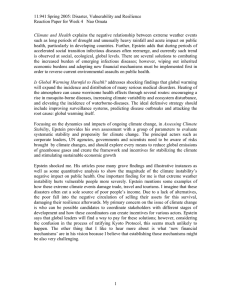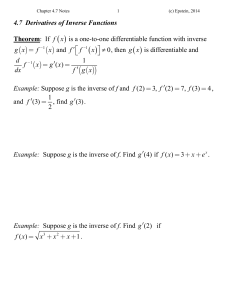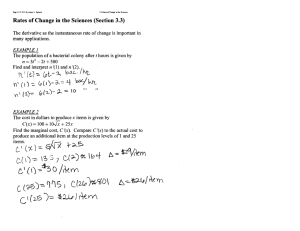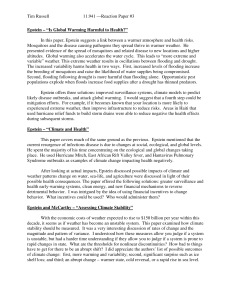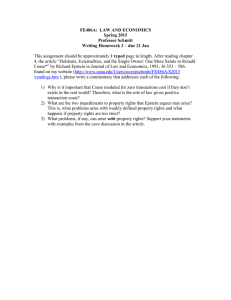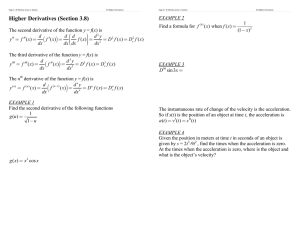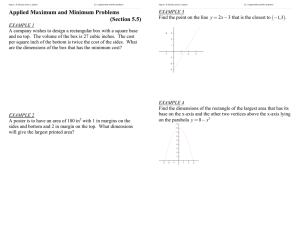( ) e Therefore:
advertisement
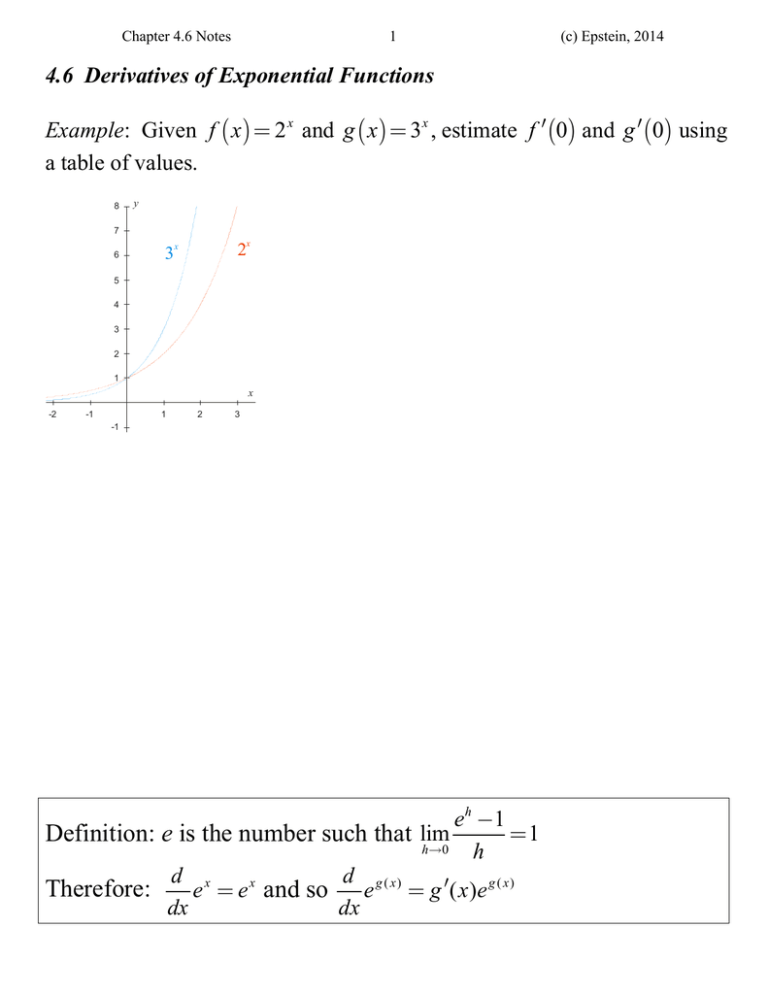
Chapter 4.6 Notes 1 (c) Epstein, 2014 4.6 Derivatives of Exponential Functions Example: Given f ( x) = 2 x and g ( x) = 3x , estimate f ¢ (0) and g ¢ (0) using a table of values. 8 y 7 6 3 2x x 5 4 3 2 1 x -2 -1 1 2 3 -1 e h -1 =1 Definition: e is the number such that lim h 0 h d x d g ( x) Therefore: e = e x and so e = g ¢ ( x )e g ( x ) dx dx Chapter 4.6 Notes 2 (c) Epstein, 2014 Example: Find the derivatives of the following functions (a) y = e x + x (b) f ( x ) = e-5 x cos(3 x ) (d) f x a (e) f x 3 x x3 1 (c) g ( x) = e x sin x Chapter 4.6 Notes 3 (c) Epstein, 2014 Example: Find the equation of the tangent line to the graph of 2e xy = x + y at the point (0, 2) Example: For what value(s) of r does y = e rx satisfy the differential equation y + y ¢ = y¢¢ ? Chapter 4.6 Notes 4 (c) Epstein, 2014 Example: Suppose a bacterial colony grows in such a way that at time t the population size is N t N 0 2t where N 0 is the population size at time t 0 . Find the per capita growth rate. Example: Suppose W t denotes the amount of a radioactive material left after time t days. Assume that the radioactive decay rate of the material is 0.2/day. Find the differential equation for W t .


